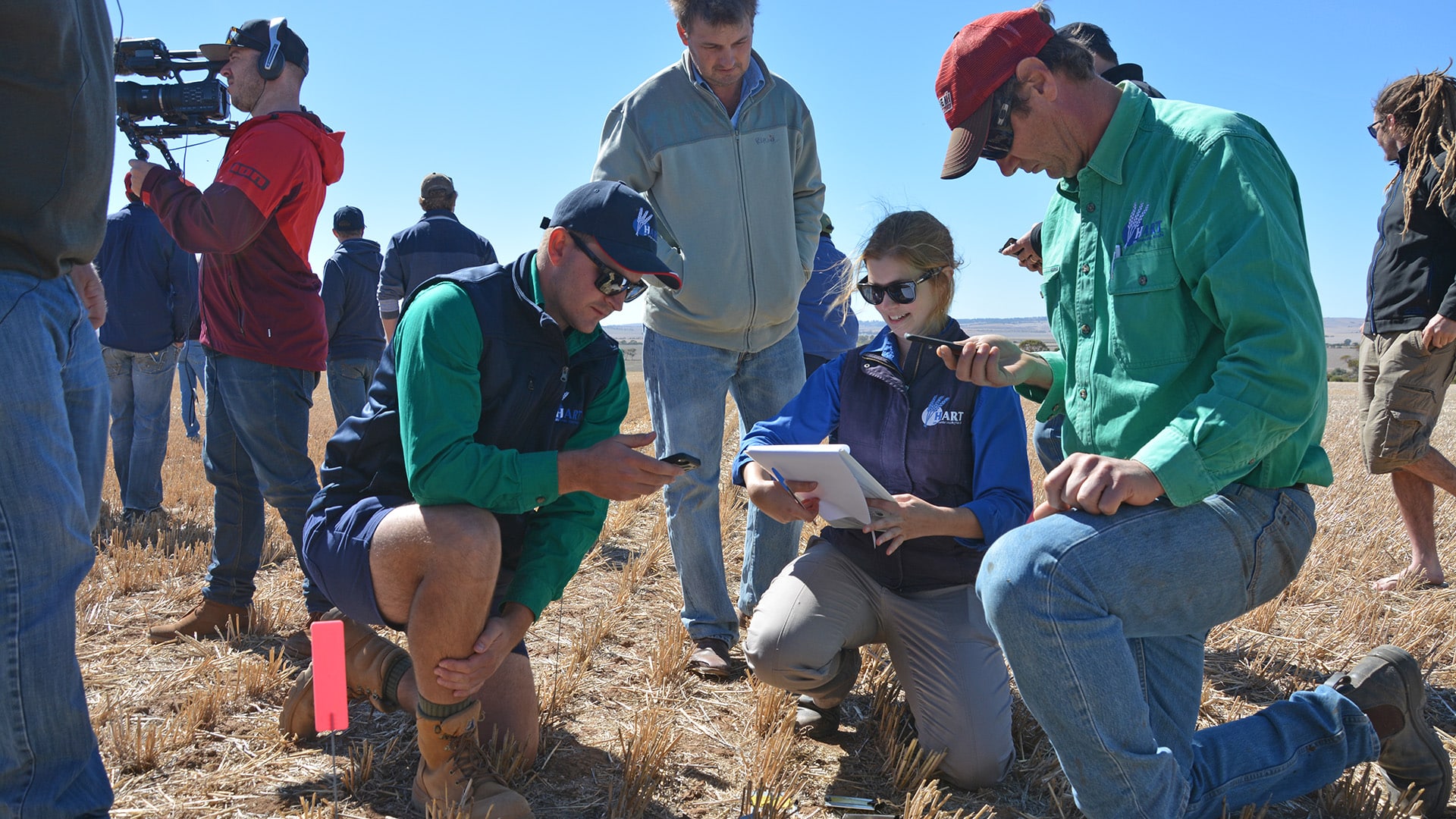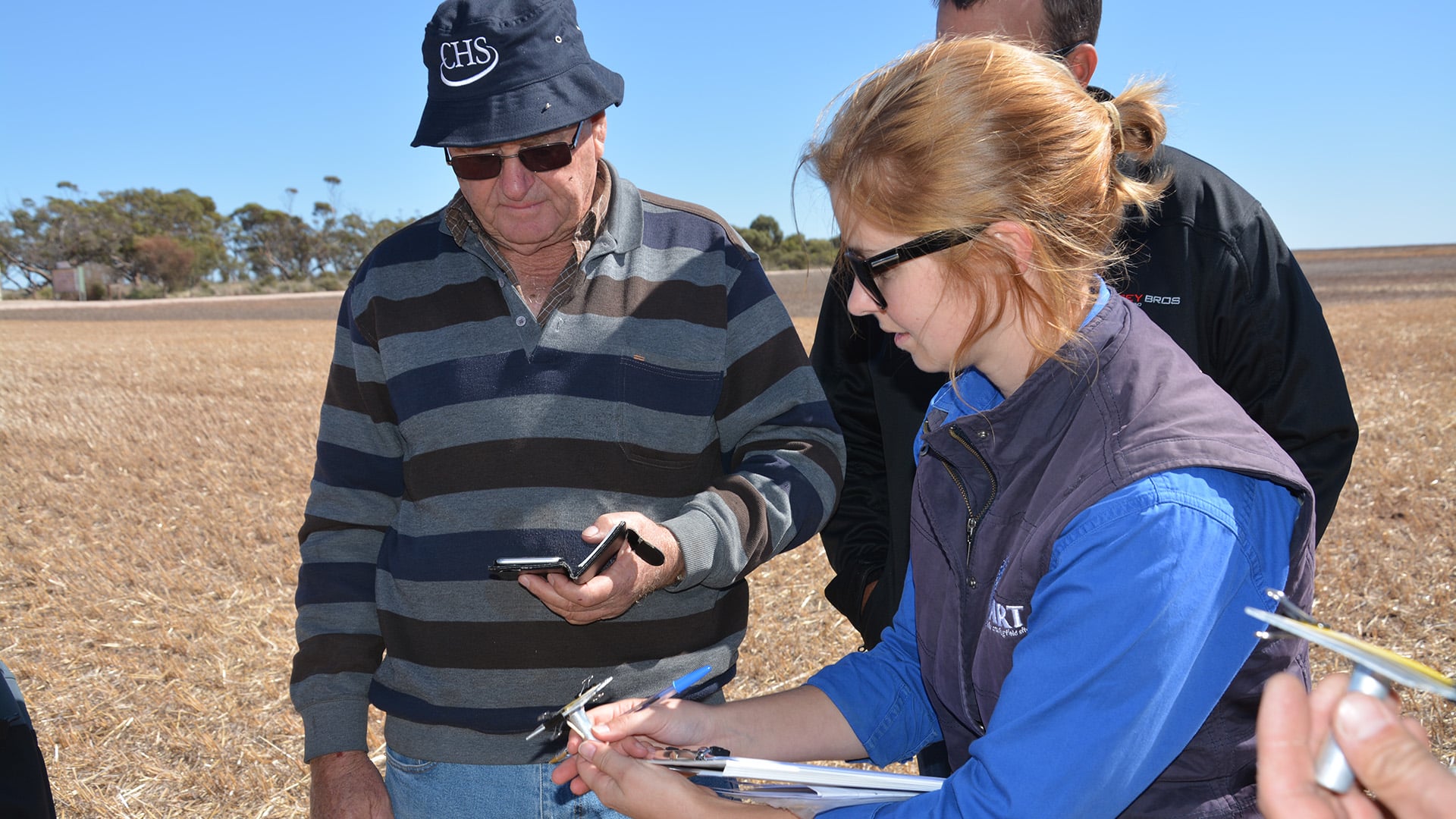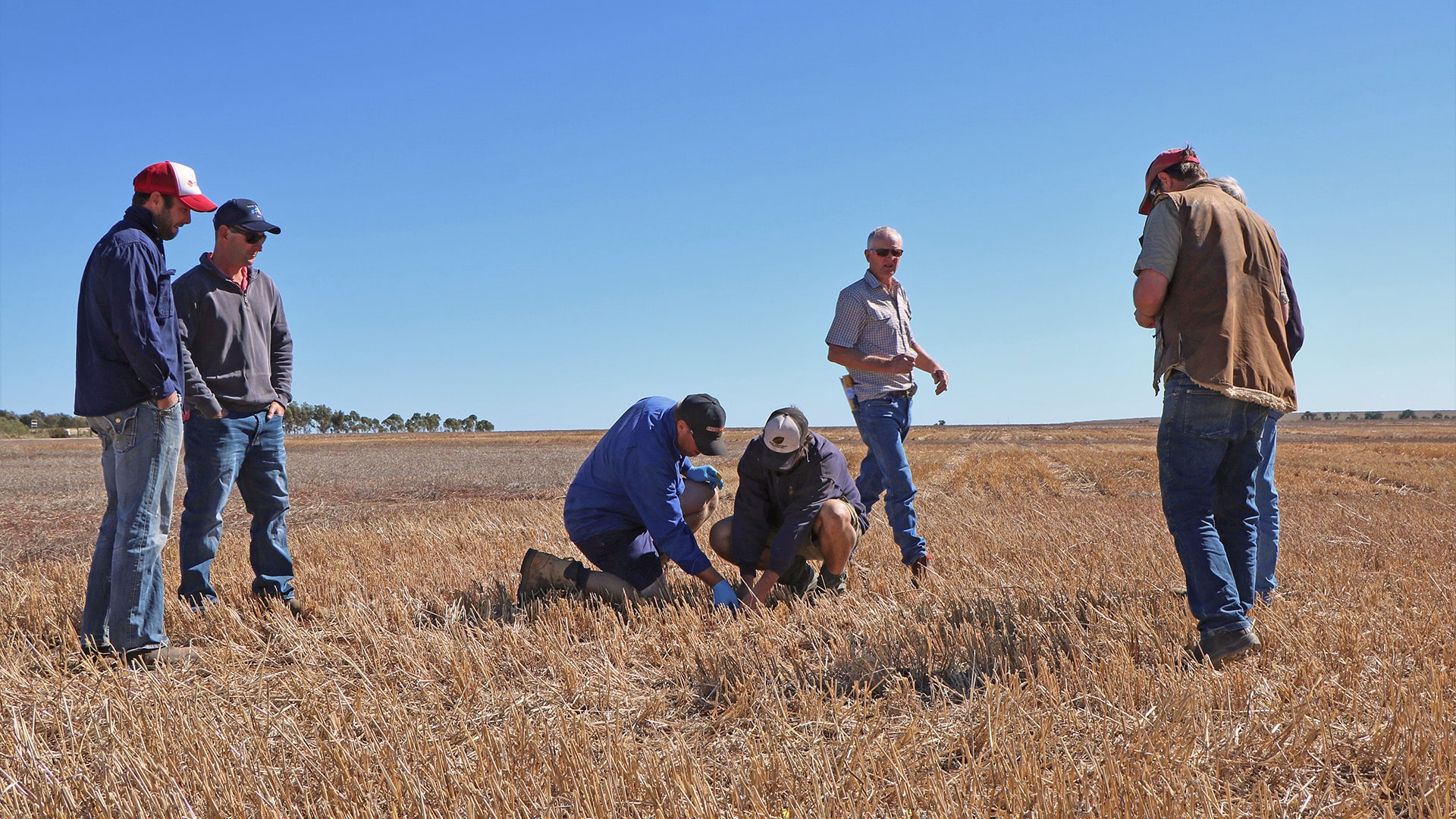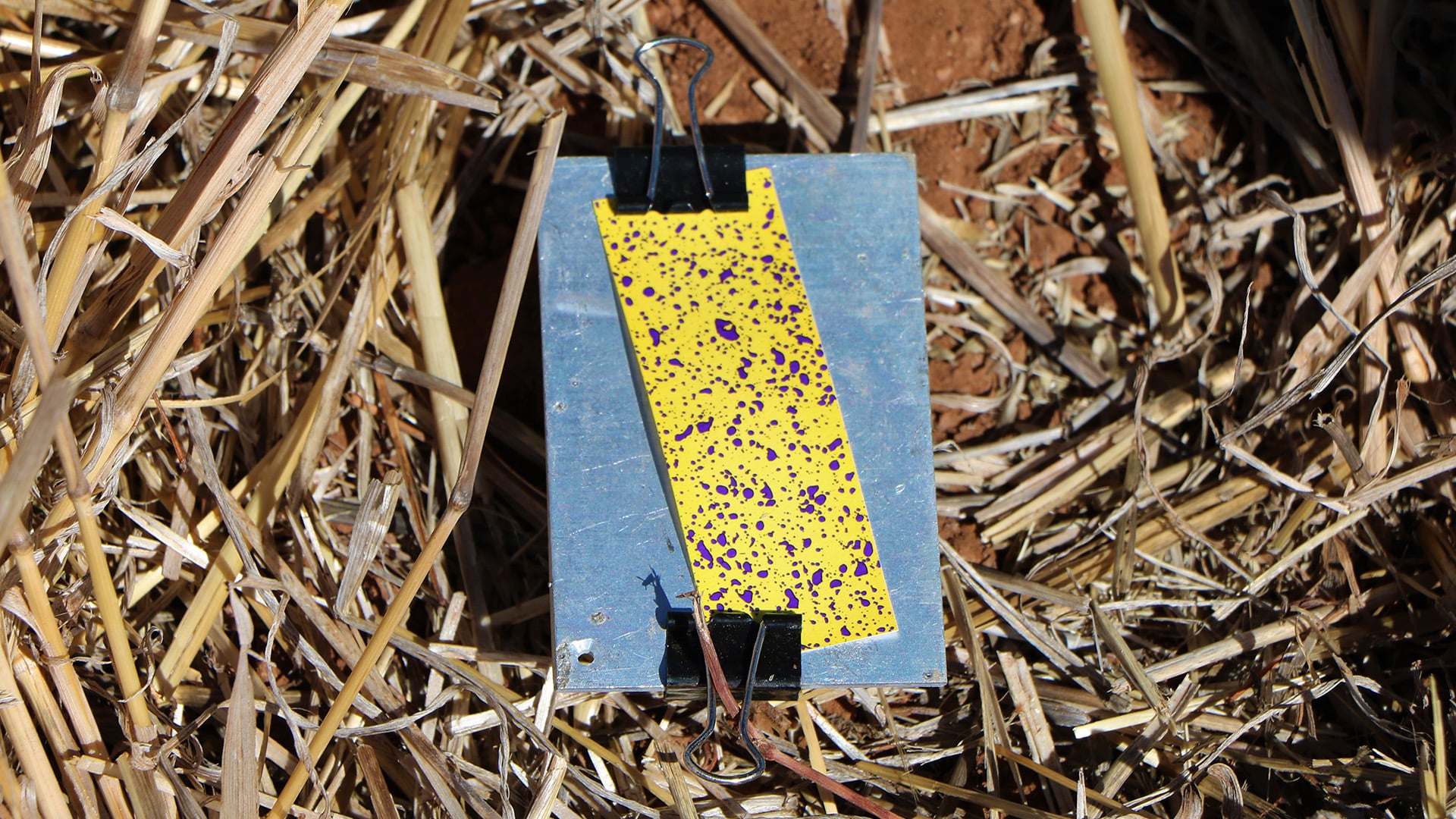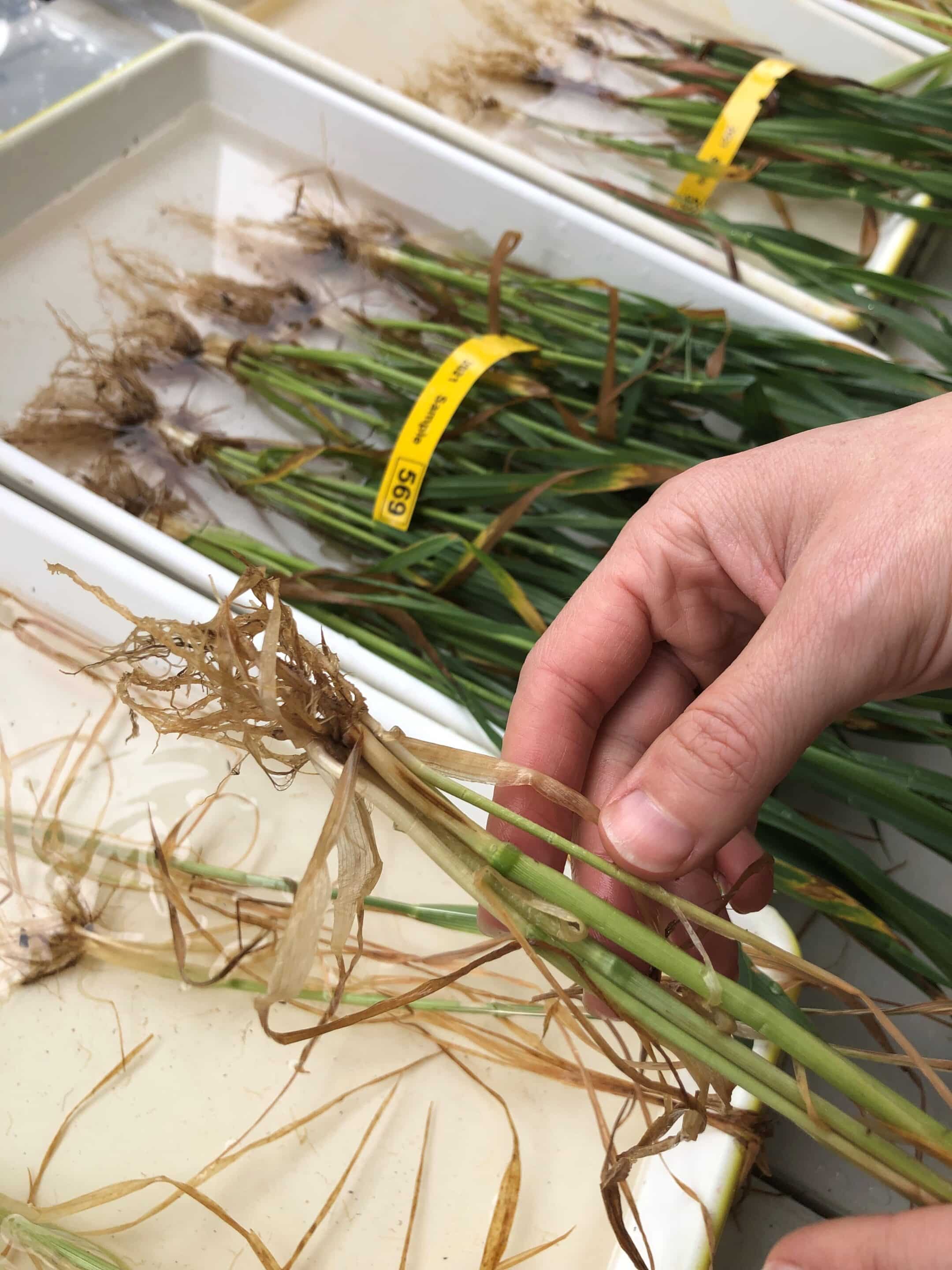START
FINISH
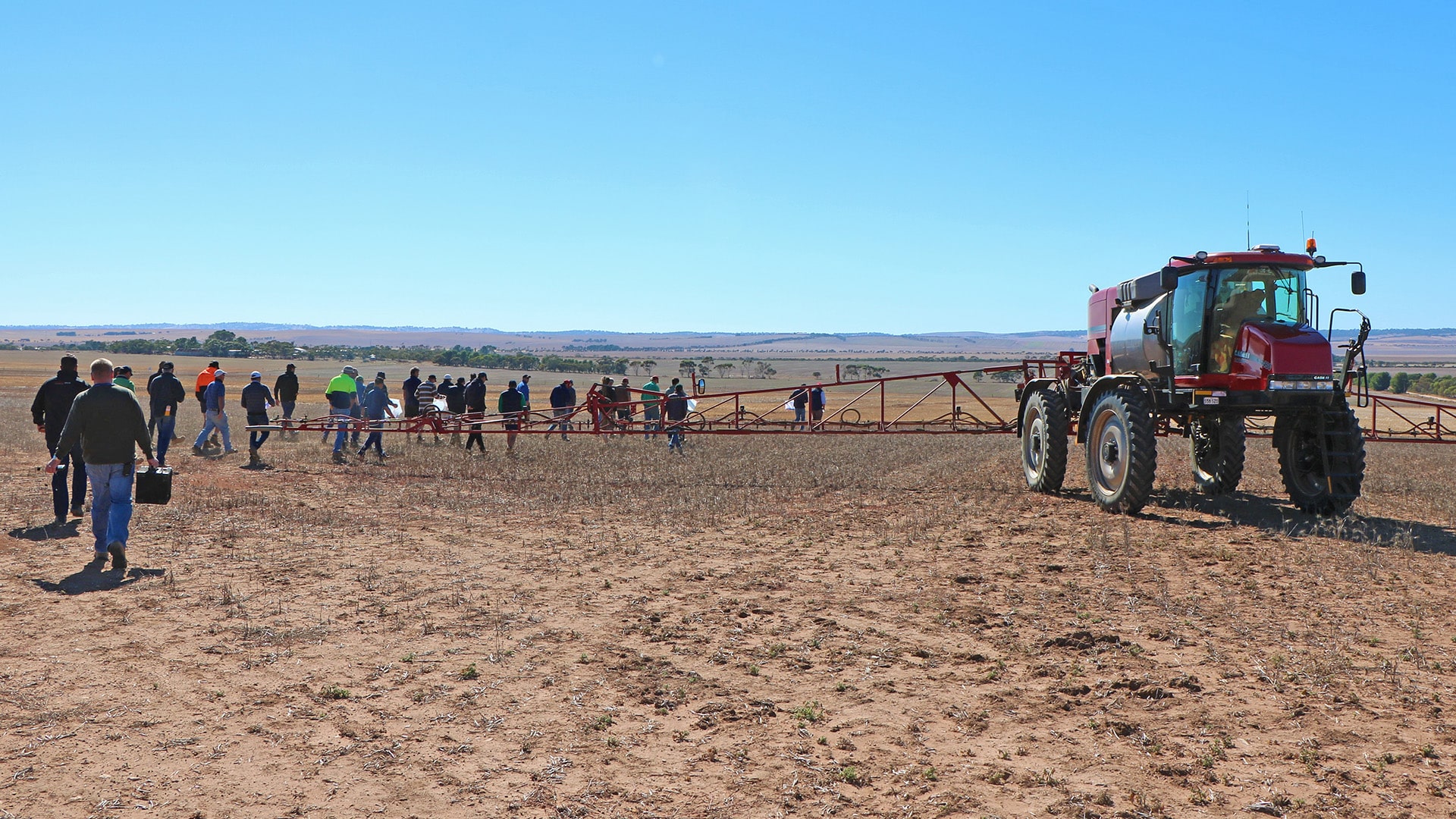
Summary
This project aimed to investigate and improve pre-emergent herbicide efficacy in stubble retention systems.
Specific trials tested the efficacy when altering key elements, such as pre-emergent herbicide chemistry and rates, spray application water rate and droplet size, and spray nozzle angle and position.
Background
A limitation of stubble retention is reduced pre-emergent herbicide penetration and efficacy, resulting in a need to increase herbicide rates. However, there has been no practical information or guidelines for growers to make decisions about specific rates, droplet size or nozzle type for optimum weed control in different stubble heights.
Pre-emergent herbicides are essential for providing good control of annual ryegrass in southern Australia, particularly as resistance to post-emergent herbicides continues to increase. Stubble can interfere with herbicide coverage and the problem has been intensified with advanced cropping systems now retaining more stubble at greater heights.
Research Aims
The core objectives of the project were to improve pre-emergent herbicide coverage in stubble retention systems by manipulating:
- Water rate and droplet size (Component A)
- Nozzle position and fan angle (Component B)
- Deliver a spray workshop and assist three growers with spray coverage and setup to be used as case studies. (Component C)
In The Field
In Component A, manipulating water rate and droplet size, the stubble treatments were:
- Baled – standing stubble harvested at 5cm height using a stripper front, with the straw windrowed, baled and removed
- Short standing stubble – harvested at short height (15cm) and stubble retained
- Medium standing stubble – harvested at intermediate height (30cm) and stubble retained
- Full stubble retention – standing stubble, harvested using a stripper front (80cm).
There were six spray application treatments and the spray set up included nozzle spacing of 50cm, boom height (averaged across the stubble heights) of 33cm + 50cm = 80-85cm, herbicide 1.5L/ha Boxer Gold® and stubble row spacing of 25cm.
| # | Volume (L/ha) | Droplet size | Nozzle | Pressure | Travel speed |
| 1 | 50 | Medium | HARDI Low drift 02 | 3 bar | 16 km/hr |
| 2 | 100 | Medium | HARDI Low drift 03 | 4 bar | |
| 3 | 150 | Medium | HARDI Low drift 04 | 5 bar | |
| 4 | 50 | Coarse | HARDI Mini drift 02 | 2 bar | |
| 5 | 100 | Coarse | HARDI Mini drift 03 | 4 bar | |
| 6 | 150 | Coarse | HARDI mini drift 04 | 5 bar |
In Component B, manipulating nozzle position and fan angle, one cereal stubble height of 30cm was used, with treatments of fan angle (120 versus 90), nozzle positions (inter stubble row versus base of stubble) and novel nozzle design (65° Syngenta veg nozzle). Spray cards were placed within treatments and positioned either in the stubble inter-row or base. All applications were made using a Miller Nitro self-propelled sprayer provided by grower Rob Wandel, Hart.
Research component C was to deliver a spray workshop and assist three growers with spray coverage and setup to be used as case studies.
Results
The results from manipulating the water rate and droplet size showed there was little difference in spray coverage in the shorter stubble treatments of baled (5cm), short (15cm) and medium (30cm). On average, spray coverage increased from 13 per cent at 50L/ha to 20 per cent at 100L/ha and 33 per cent at 150L/ha, with similar results in the second year (12 per cent, 20 per cent and 28 per cent).
The stripper front harvested stubble was the only treatment to significantly reduce spray coverage. The area covered was reduced by five per cent at 50L/ha, 16 per cent at 100L/ha and 16 per cent at 150L/ha.
An interaction between droplet size and spray volume was not observed, changing between coarse or medium droplet size did not increase the coverage area.
When looking at changes to nozzle position and fan angle, spray coverage at the base of the stubble compared to the inter-row showed a similar pattern across all treatments. On average the spray coverage at the base of the stubble was 9.4 per cent compared to the inter-row 13.4 per cent. None of the tested combinations significantly improved coverage at the base of the stubble compared to the inter-row.
The research trial results were presented at a spray workshop in April 2017 and three farmers were selected as case studies to review on-farm applications.
Project Participants
Hart Field-Site Group: Dr Sarah Noack
Growers: Rob Wandel, Matt Dare, Justin Wundke, Rob Price, Nathan Zweck and Peter McEwin
University of Adelaide: Samuel Kleemann
Consultants: Peter Hooper and Bill Gordon
SARDI Clare: John Nairn and Kathy Fischer
The Problem
Technology improvements have seen a preference for stubble retention. However, stubble acts as a physical barrier to spray coverage, reducing herbicide efficacy.
The research
This research was designed to provide practical information for growers to help make decisions about specific rates, droplet size and nozzle type for optimum weed control in different stubble heights.
More information
Sandy Kimber, Hart Field-Site Group
T: 0427 423 154
E: [email protected]
Value for Growers
Hart Field-Site Group published a fact sheet on this project and extended the results through Hart trial results articles and at field days and crop walks. A video was also produced on the spray workshop.
Ultimately, there is no one-size-fits-all set up for improving pre-emergent herbicide coverage in stubble retention systems. Some key tips for improving coverage learnt through the project are:
- Measure your spray coverage so you can improve it.
Using water sensitive paper and the SnapCard app is useful in determining spray coverage as a percentage. - Manage your stubble at harvest.
The more stubble on the ground, the more likely it is that herbicides will be bound to it. Lower levels of stubble in combination with leaching rain result in the best scenario to achieve pre-emergent herbicide efficacy. - Manipulate your spray setup.
One of the simplest changes to improve spray coverage in high stubble loads is to increase water rate. An interaction between droplet size and spray volume was not observed as expected in this project. However, other research has shown large droplets in addition to high water rates are required in high stubble loads to ensure the herbicide reaches the soil.
Latest Research Projects

